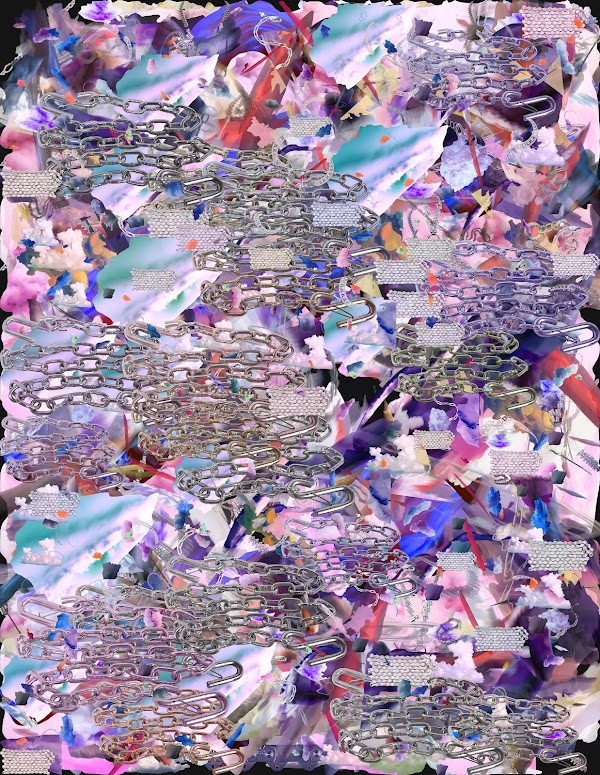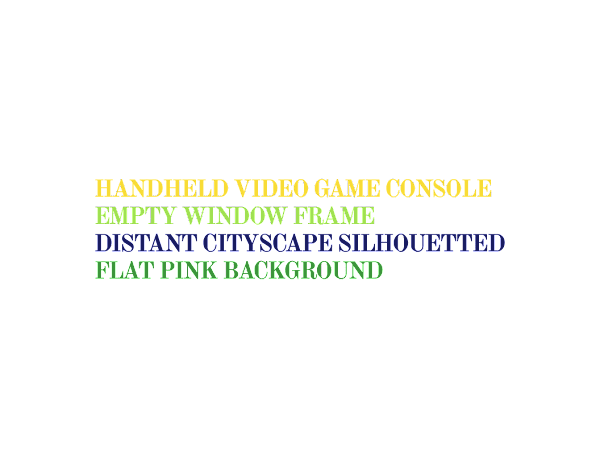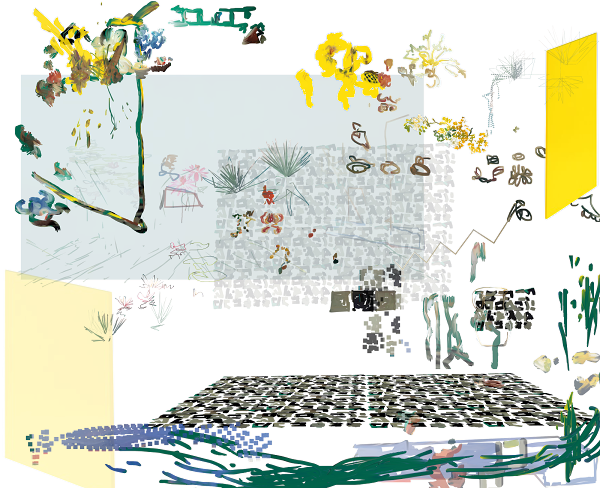Artifex Project
Roger Dickerman explains how the Artifex Project preserves the work of the 3D artists who helped create the NFT market.

Known in the crypto space exclusively by his handle, Gabagool is an Ethereum historian and on-chain sleuth. He has used his knowledge of how to read the blockchain to rediscover forgotten artworks and identify scams that use sock-puppet wallets to trick would-be investors. In October he founded Information Token, a DAO that brings together like-minded people to share their research in a collaborative atmosphere, and incubate crypto projects that they believe will make web3 a more constructive, less adversarial environment. In the interview below, Gabagool talks about his origins in crypto and how his encounters with conceptual blockchain projects led to an interest in digital art and NFTs.
I started buying crypto on Robinhood as a hobby in January 2020. I had a fellowship at Columbia University and I was teaching creative nonfiction to undergrads. I was broke, as many adjunct instructors are. During Covid, I had all this free time sitting at home on my computer and I got obsessed with decentralized finance and this idea of an alternative financial system. At that point, no one was talking about NFTs. If they were, they were talking about CryptoPunks or CryptoKitties in a critical, tulip-bubble kind of way.
In June 2021 I decided I wasn’t going to look for another teaching job. I wanted to go full-time crypto. I was thinking about how someone from a humanities background could get more involved in the space. It didn’t seem obvious to me at all that any of the skills that I had from grad school would help me in crypto. But I noticed there was more talk about the historical origins of NFTs. So I started researching the history of people making digital art using blockchain technology, and started writing threads on Twitter about particular projects.

The token studio Proof of Beauty is dear to my heart. They offered me my first job in crypto. I worked as a historian on their project HASH, which lets people mint a work of generative art to commemorate a notable transaction on Ethereum. My job was to verify that what the minter claimed was happening in a transaction was actually happening. This was a really good way for me to learn more about Etherscan and how to read the blockchain. It’s a funny concept, but most people who interact with the chain in any direct way do so by reading it. There’s something textual about that which I find fascinating. Studying Ethereum’s history led me to rediscover older NFT projects and write about them, which brought a lot of attention to my Twitter account.
The internet is all noise. There’s this profusion of activity. What makes an NFT interesting is that it’s freezing a frame within all the noise and making it tangible and transferable. You can possess a small bit within a sea of bits. HASH does that for Ethereum. They’re making transactions into aesthetic objects. I collected some myself. I like collecting exploits. I’m also really interested in key governance decisions. Decentralized governance is one of the most unique things about crypto, I’m interested in the idea of a hash representing important procedural moments.

I also collected a bunch of art-related hashes. I minted Mitchell Chan creating the IKB tokens that wrapped his Digital Zones. I minted Rhea Myers creating Token Equals Text and Certificate of Inauthenticity. Rhea Myers is my personal favorite NFT artist. She started making art on blockchains since before Ethereum launched. There’s a sense of play at the core of her work, and she has been playing for a long time with the smart contract itself as the medium. I like that. She opened my mind.
I was really inspired by Sam Hart’s work on conceptual blockchain art. I spent a lot of time looking at his wallet and I realized there was an entire school of art being produced on the blockchain that no one in crypto talked about at all. No one in the art world seemed to care about it either. I started exploring that narrow niche. I found it way more interesting than most of the NFTs that I was seeing. It made me realize there was a discourse about the implications of blockchains on art. I come from an academic background and that was a very refreshing thing for me to discover amid all the talk of number go up.
I love terra0, which is a collective that is using blockchain governance to develop decentralized frameworks for regulating land use and environmental protection. Much of discourse around ecology and NFTs centers on this really basic idea that NFTs are bad for the environment. But terra0 is thinking about the environmental implications of this technology with much more nuance. I came across a token of theirs in Sam’s wallet, or maybe it was Matt Condon’s. It had no name on Etherscan—just two closed parentheses. I did more research into the token and I found these Medium posts that terra0 had published about their Flowertokens experiment. In 2018 they had a hundred dahlias growing in Trust Space, a co-working space for internet freaks in Berlin. Then they created an ERC-721 token that represented ownership of individual dahlias. And you could buy them. At the time they were very cheap. They created a speculation market for which dahlias would bloom and which would not. I discovered Flowertokens after all the dahlias had died. Even the digital incarnation of the flower was forgotten, dead. The front end of the website didn’t work. I could only find which tokens were for sale by reading the smart contract that they lived on. It felt like digging in an archive and finding something beautiful that had once existed. When I posted about it, I was very surprised that other people seemed interested. There was a brief speculative fervor around Flowertokens, three years after the project had happened. In my mind, they’re one of the coolest NFTs ever. I can’t really think of another one as beautiful and fragile.

Most projects that connect the digital and the physical involve redeeming a lottery ticket for something. It just seems very crass. Flowertokens was very intentional. I loved how much physical labor was concealed in this very simple ERC-721. There was a live camera feed of the flowers growing. The rate of growth was tracked using a DSLR camera. Some of that data was input directly into the tokens via the smart contract. In 2018, terra0 was pushing the boundaries of what this technology could do, way more than most people right now are.
Various Books is a generative art project. It’s a collection of speculative books generated and stored on-chain. When you mint a book it randomly creates a title and picks the color. I stumbled across it on Twitter. I liked it because of this idea of books that haven’t been created yet. I’m a writer. I love coming up with titles of books. It was interesting to see a computer’s take on it. The titles do sound like something that could be a book. Maybe I liked this project because my dad has a book business. When some professor at Harvard dies and the family’s trying to get rid of their libraries, my dad will come in and take all these books and sell them on eBay or Amazon. I love books. I have always have been a reader, and some books have great value to me. But at my parents’ house I see books that are just worthless piled in a corner waiting to be taken out. I like this project just for reasons of my personal connection to books.

I found Petra Cortright’s and Case Simmons’s work at the same time through Simco Drops, which is the NFT platform by collector Stefan Simchowitz. I really like Case’s Temple collection. But my favorite thing he has done is Clouds on Chains, where he did this very intricate layering of small digital objects. You can see a similar process in Temple, which has really distinct digital objects. But in Clouds on Chain, they’re abstracted into colors and shapes. He created a mosaic from these very high-quality files. You can zoom in and the resolution remains high. I know that it was expensive to put these files on-chain because they’re quite large. I liked how Case is engaging with the number of pixels that are uploaded into these NFTs. Case’s process of creation is like creating generative art manually. It’s not an algorithm spitting out these images. He’s taking generated images and then by hand curating very small elements of them quite purposed. it’s an intersection of human labor and computer labor in the art making process.
Petra’s art is similar. I love her Rooms series. Petra to me is an emblematic NFT artist. She has such a great digital persona. When people would shitpost on her YouTube videos, she’d one-up their trolling. That’s so hilarious. She innately understands that to be a digital artist, you need to have a persona online.

People talk a lot about two concepts in NFTs: utility and community. It’s sad how limited experimentation with these two essential elements has been so far. We really don’t know what an NFT community can be. It doesn’t have to be an exclusive club. And the utility doesn’t have to be a game piece. I’m into anyone who’s being playful with those concepts. I see that in Gradis. They created these very cute little on-chain running figures. It was a very cheap mint, and it was all open-source. And now they’re building a game world around their little characters.
I’ve always loved art. I’ve always loved making art. I’m an amateur. I love to draw. I love to make stencils. I love to sew. My mom is a painter. I grew up in a very artistic family. Until very recently I was broke as fuck so I never would have identified as a collector in the art world. But I can identify as an NFT collector. I don’t want to be too high-falutin’ with this, though. I buy some NFTs purely to make money. I’m speculating, but I don’t think that the line between speculating and collecting has to be that neat. There are things I buy and know I will never sell. The thing I love most about being an NFT collector is getting to know these artists. I hope that I’ve been able to use whatever platform I have in the crypto space to help these artists make a sale. Because they’re contributing to culture, which is hard to find in the NFT world.
—As told to Brian Droitcour
